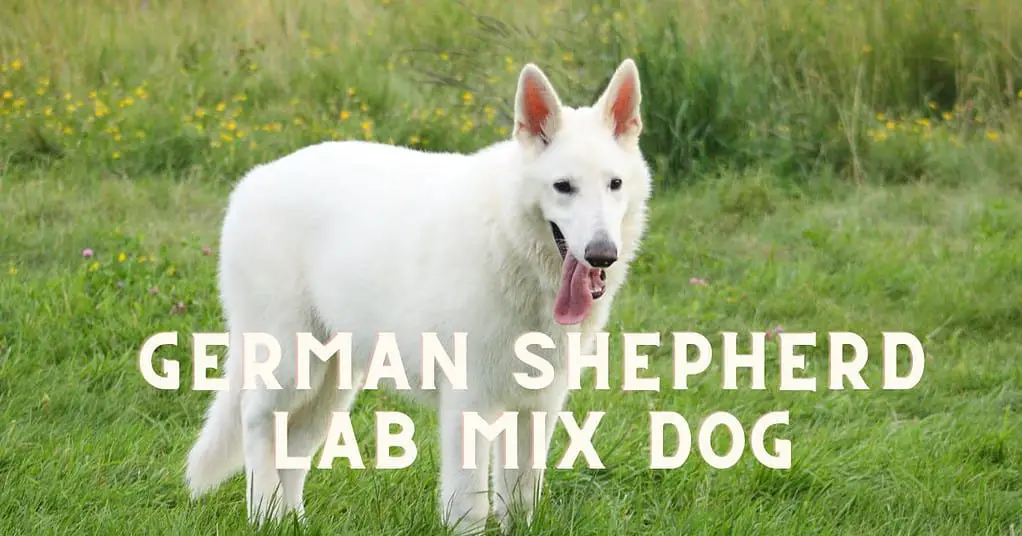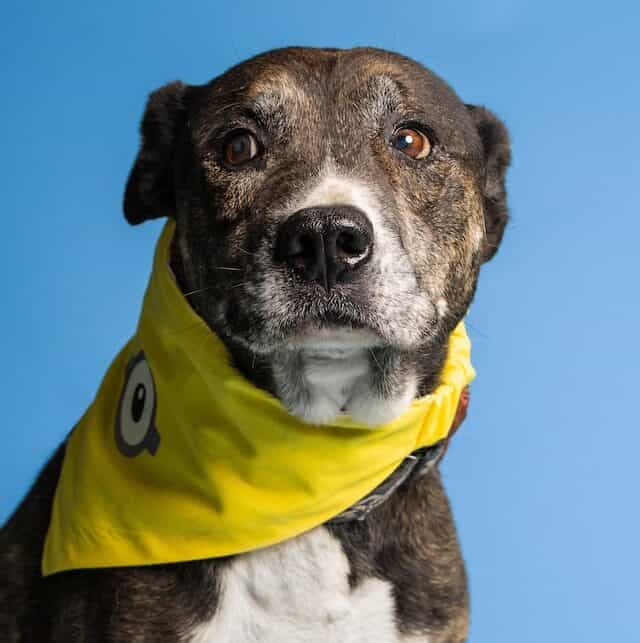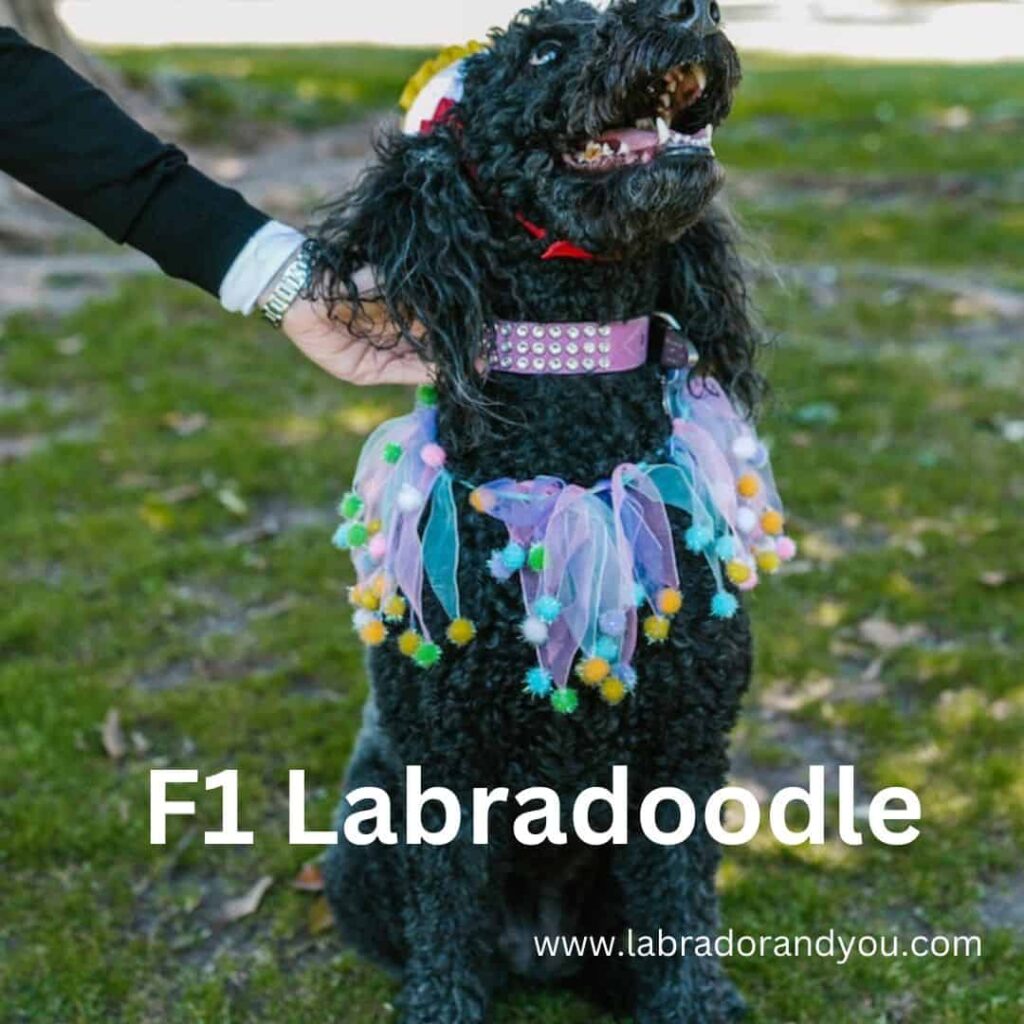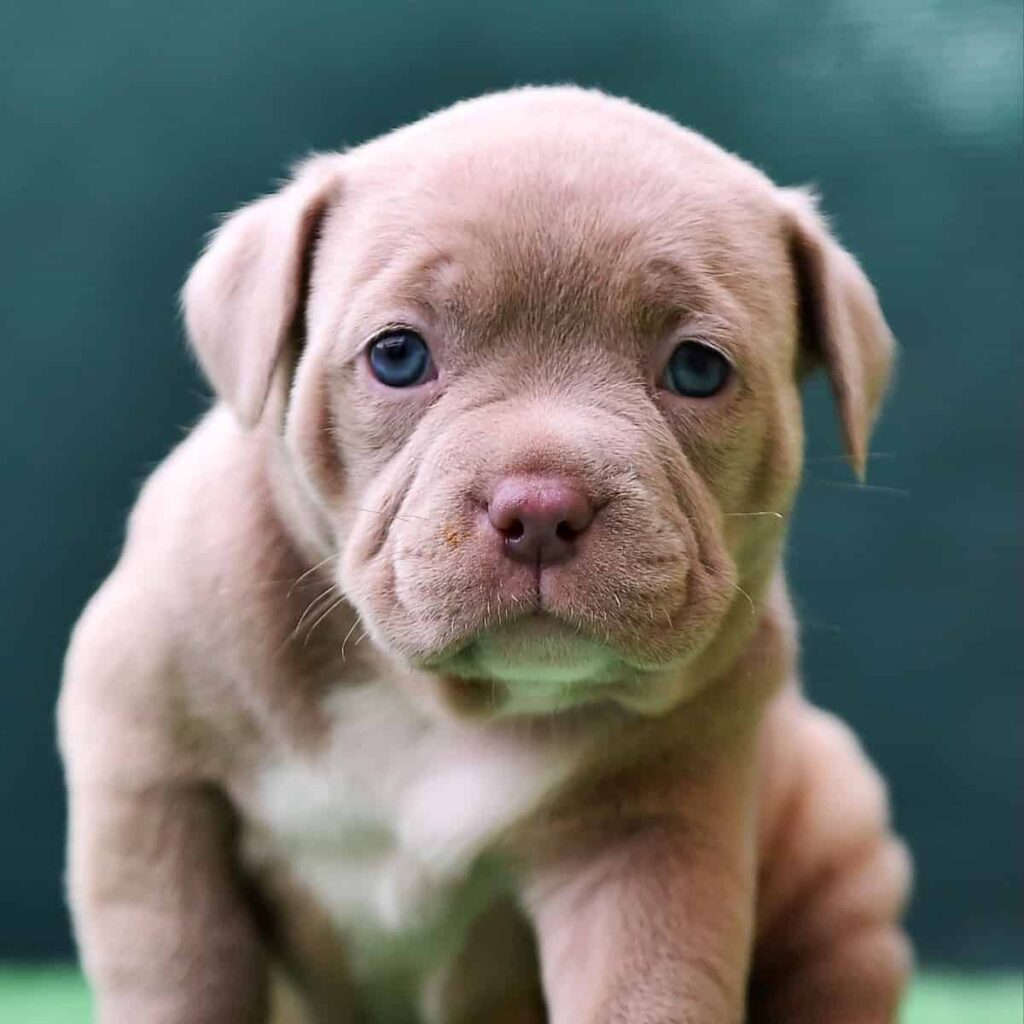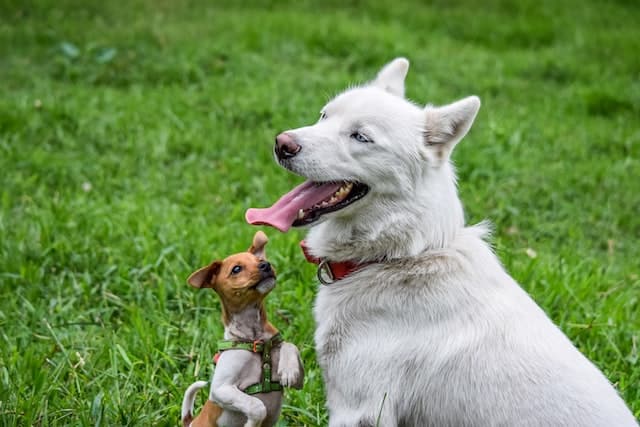Red Labradoodle is a variation of the popular Labrador Retriever and Poodle crossbreed with a rich, reddish-brown coat. This reddish hue is inherited from their Labrador lineage, as purebred Labradors frequently occur in shades from light yellow to deep red.
Red Labradoodles can be any of the typical coat types – wavy, curly, or straight. They shed moderately and are intelligent, sociable dogs that need daily exercise. Red Labradoodles make an excellent choice for those desiring a mix of Poodle and Lab traits in a colorful package. They do require regular grooming.

The Origin of Red Labradoodle
The creation of Red Labradoodles can be traced back to Barksdale’s Red Australian Labradoodles, which marked a significant turning point in the world of dog breeding.
Barksdale’s Red Australian Labradoodles
Barksdale’s Red Australian Labradoodles are famous. Their color is rich and lovely. You can find them in shades of Apricot, Red, Caramel, or Caramel Red. Not only do they look good but their fur is also hypoallergenic and does not shed! They love being around people and make great friends for families.
Barksdale’s Labradoodles stand out because of their friendly nature and smooth coats.
How the breed came about?
A man named Wally Conron made the Labradoodle. This happened in Australia during the 1980s. His idea was to mix a Labrador Retriever and a Poodle. These two breeds are very different, but he wanted to create a new one that had the best parts of both.
The result was stunning: Labradoodles. The breed became famous fast! People loved their wavy fur, smart brains, and big hearts. They also liked that they didn’t lose lots of hair like other dogs do.
It’s no wonder people all over the world fell for this amazing Australian crossbreed!
Impact on breeding businesses
The red Labradoodle boom changed the dog breeding world. Many breeders saw this as a new chance to grow their businesses. They began focusing on canine genetics and breeding practices needed for creating more Red Labradoodles.
Some even set up special Labradoodle breeding programs, using genetic traits from Barksdale’s Red Australian Labradoodles. This change made the demand for these cute puppies go up high! Tricky rules about dog reproduction also got attention by breeders and were followed with care to keep pup health good.
The rise of red Labradoodles shook up the dog business in a big way!
Popular Red Labradoodle Parents
The popular Red Labradoodle parents include renowned names like Barksdale’s Harvest Dawn, Barksdale’s Diya Laila, and Barksdale’s Mabeline. Other notable figures in this lineage are ESSIE KAY ‘aka ROUX’ and the stunning NORMA JEAN.
Each remarkable dog contributes unique traits to their offspring, making every Red Labradoodle a delightful blend of character and charm.
Barksdale’s Harvest Dawn
Barksdale’s Harvest Dawn is a special dog. She is a multi-gen Australian Labradoodle from Barksdale. Her coat is red apricot and it does not shed. This makes her good for people with allergies.
Beyond being hypoallergenic, she offers much more. She has a friendly nature and shows smartness in many ways. People love her!
Barksdale’s Diya Laila
Diya Laila is a lovely Red Caramel Labradoodle with white patches. She is part of the Barksdale family. Her coat is not like others, it’s unique. It has full waves and feels soft as fleece!
People love her a lot, especially those who have allergies. This pretty dog does not shed fur at all. So people will feel good when they are near Diya Laila.
Barksdale’s Mabeline
Barksdale’s Mabeline is a star. She’s one of the top Red Labradoodle parents. Her stunning red coat comes from strong Labradoodle genetics. People love her keen eyes and gentle heart.
Barksdale’s Mabeline has made many cute Red Labradoodle puppies. Each puppy shows the same traits as their mom, like her sweet nature and shiny coat. Many people want a pup just like Mabeline!
ESSIE KAY ‘aka ROUX’
Essie Kay, also known as Roux, is a stand-out among Red Labradoodle parents. Barksdale bred her. She falls under the Multi-Generation Australian Labradoodles. Just like her name hints, she flaunts a wavy red coat that sets her apart.
Her size? She is small to medium-sized which makes her perfect for families of all sizes! This full/wavy coated beauty has left a mark in the breeding world of Red Labradoodles. Roux carries both charm and color in one cute package!
NORMA JEAN
Norma Jean holds a top spot among popular red Labradoodle parents. This famous dog has strong ties to the respected red Labradoodle bloodline. Many breeders look up to Norma Jean’s lineage for its pure and high-quality traits.
Dogs from her family tree show great health, beauty, and smarts. Her heritage stands out in the world of red Labradoodles.
Famous Red Labradoodles
Discover the stories behind some of the most famous Red Labradoodles, such as TIRA SITARA and HERMIONE GRANGER “MIONE”, whose unique personalities and distinctive appearances have made them standouts within this breed.
You’ll also encounter BUTTERSCOTCH COOKIE, SUNSHINE KARA, and CARAMEL PUDDIN’, all renowned reds who are not only beautiful but are also celebrated for their temperaments.
TIRA SITARA
TIRA SITARA is a top name among famous red Labradoodles. She stands out with her stunning bright coat and warm, loving nature. This dog has taken the Labradoodle breed to new highs with her charm and grace.
HERMIONE GRANGER “MIONE”
Hermione Granger, also called “Mione,” is a famous Red Labradoodle. Her bright red coat makes her stand out in any crowd. Mione has a playful nature and loves to be the center of attention.
She is known for her keen mind and quick learning skills, much like Hermione from Harry Potter. This bundle of joy has won many dog shows due to her majestic looks and charming personality.
BUTTERSCOTCH COOKIE
“Butterscotch Cookie” is a well-known red Labradoodle. She shines in the world of crossbreed dogs for her rich red coat color. People love her warm and friendly nature, much like other Labradoodles.
Butterscotch Cookie’s unique coat makes her stand out among other famous Labradoodles in the United States. This lovely dog shows why many families love this hypoallergenic breed.
Her intelligence also sets an example of how easy it can be to care for these low-shedding pets.
SUNSHINE KARA
Sunshine Kara is a famous Red Labradoodle. She has bright red fur that looks like sunlight. People love her playful and kind nature. Sunshine Kara shows how fun and loving Red Labradoodles can be.
This makes them great family pets.
She does well in dog shows too! Her wins show off the beauty of this breed. Everyone loves to see Sunshine Kara shine at these events. Her amazing traits make Red Labradoodles popular dogs to have.
CARAMEL PUDDIN
“Caramel Puddin” is a famous Red Labradoodle. She shows the beauty of this dog breed with her deep red coat. This color makes her stand out in any crowd. Her bright eyes have a playful gleam that matches her lively spirit.
Caramel Puddin is well-loved by both kids and adults for her sweet nature and friendly ways, just like the dessert she’s named after! Her fame brings more love to all Red Labradoodles and makes people want to have one as a pet.

Characteristics of Red Labradoodles
Red Labradoodles come in diverse sizes, ranging from miniatures to standards. Their captivating red coloration is a defining trait that stands out among other Labradoodle colors. Known for their sociable and affectionate temperament, Red Labradoodles are both intelligent and easy to train, making them a joy to live with.
Size Variations
Red Labradoodles come in three sizes. The biggest ones are called standard Labradoodles. They can be as tall as 24 inches! Medium Labradoodles stand about 18 to 20 inches high. The smallest ones, the miniature Labradoodles, grow only up to 14 or 16 inches.
So, you can choose a size that fits your home and lifestyle best.
Coloration
Red Labradoodles have a special coat. Their unique color comes from the poodle parent. This is due to how color genetics work in crossbreeding. The red color is rare among Labradoodles. Most of them are black, white, cream or other colors.
The coat of a Red Labradoodle can vary. Some might have light red coats while others could be dark red. Coat inheritance plays a big role here too. It’s all about the genes they get from their parents!
Temperament
Red Labradoodles are known for their friendly and lively nature. They love to play, run around and make friends with everyone. They show a lot of energy if they have more Labrador genes.
But don’t worry, they can also be quite calm and easy-going. This makes them great pets for those getting a dog for the first time. Their behavior is full of joy which brings happiness to any home!
Caring for Your Red Labradoodle
Discover essential grooming tips and exercise needs that will keep your Red Labradoodle healthy, vibrant, and energetic. Dive in to learn more about the personalized care this unique breed deserves!
Grooming Tips
Taking good care of your Red Labradoodle means a lot of grooming. Follow these tips to keep your dog’s coat healthy:
- Brush your dog’s coat at least once a week. This helps to stop tangles and keeps the fur looking nice.
- Trim or clip your dog’s hair from time to time. This prevents the fur from getting too long and messy.
- Make a schedule for grooming your dog. Having set times for brushing and trimming can make it easier for both you and your pet.
- Always pick the best shampoo for your Labradoodle’s fur. It should be gentle on their skin but strong enough to clean their unique coat.
- If your Labradoodle has a woolly Poodle – like coat, take extra care with grooming. These coats need more attention than straight coats.
- Regular brushing is key if your Labradoodle has curly fur. This stops the curls from forming knots that can hurt when brushed out later.
Exercise Needs
Red Labradoodles love to run and play. These dogs need lots of action each day to stay healthy and happy. They should get at least 60 minutes of exercise every day. This can be walks, hikes, or playing games like fetch.
Exercise is not just about keeping your Red Labradoodle’s body fit. It also helps their mind stay sharp! You can use training sessions as a way for them to get the mental stimulation they need.
Also, remember that all this exercise means these furry friends will need enough space at home to stretch their legs and burn off energy.
Types Of Labradoodles
From mini to standard sizes and Australian to American varieties, we demystify these designer breeds for potential owners.
Origin of all Labradoodle types
All Labradoodle types come from a mix of dogs. They start with a Labrador Retriever and a Poodle. This match makes the first Labradoodles. These dogs are good for people with dog allergies because they don’t shed much hair.
Later, the Australian Labradoodle came along. It is not just the two breeds mixed together but three! There’s also a Cocker Spaniel in their family tree. All this started back in Australia in the early 80s to help blind people have guide dogs that didn’t make them sneeze or itch.
Today, we see many size and breed types among Labradoodles thanks to these early mixes.
Size Varieties
Labradoodles come in different sizes. There are standard Labradoodles, medium Labradoodles and mini Labradoodles. This size can change based on the poodle parent since they also come in three types: standard, miniature or toy poodle.
Red Labradoodles usually fall into two size groups: standard and mini. The variety in size makes it easy to find a dog that fits into any home or lifestyle!
Breed Types
Labradoodles come in many types. This is because they are a mix, or a hybrid, of two dog breeds: the Labrador Retriever and the Standard Poodle. These parent breeds are both loved for their own reasons. They have great looks and are very smart.
There are three main breed types of Labradoodles. First is the American Labradoodle. The parents of this type can be any mix of Labrador Retriever and Poodle, but usually they are all from America.
Second is the Australian Labradoodle, where some Irish Water Spaniel or Soft-Coated Wheaten Terrier blood may also be mixed in with Labrador Retriever and Poodle genes. Lastly we have the British or UK Labradoodle which will always be a cross between only British Labrador Retrievers and Miniature or Standard Poodles.
Each type has its own special traits that make it unique from others.

Labradoodle Generations
In this section, we will explore the various Labradoodle generations – F1, F1b, F2 and Multi-Generational, explaining their distinct genetic compositions and potential implications for health and temperament.
We delve into what these designations mean and how they affect your furry friend’s characteristics. With a better understanding of these generations, you can make an informed decision when choosing the perfect Red Labradoodle to join your family.
F1, F1b, F2, and Multi-Generational
Labradoodles come in several generations, namely F1, F1b, F2, and Multi-Generational. Each generation carries distinct characteristics and traits inherited from their poodle and Labrador Retriever parents.
| Generation | Description | Coat Properties | Best For |
| F1 | These are the first generation of Labradoodles, resulting from a mix of Poodle and Labrador, translating to 50% of each breed. | Coat may be coarse and wiry. F1 Labradoodles may shed. | People who don’t have allergies or aren’t concerned about shedding. |
| F1b | This generation has one purebred parent (Labrador Retriever or Poodle). They are bred to correct the coat and can have a coat closely resembling the Poodle parent. | Coat is often more like the Poodle’s, meaning it is typically hypoallergenic and low-shedding. | Individuals with allergies or those who prefer a dog with low shedding. |
| F2 | F2 Labradoodles are bred from two existing F1 Labradoodles. This generation can express a wider range of coat types and appearances. | Coat may vary widely, from wiry and shedding to hypoallergenic and low-shedding. | People who appreciate diversity in coat types and appearances. |
| Multi-Generational | These Labradoodles are bred from two Labradoodle parents, not necessarily from the same generation. They are the result of multiple rounds of selective breeding. | They often have the most desirable coat properties, both hypoallergenic and low-shedding. | Individuals with allergies and anyone who prefers a dog with low shedding and a predictable appearance. |
Labradoodle Coats
This section delves into the various coat types that Labradoodles can possess, examining their differences, offering grooming advice specific to each, and sharing fascinating facts about the color variations among Labradoodles.
Differences in coat types
Labradoodles can have three types of coats. The first type is hair. This coat feels a bit rough and wiry. Hair coated Labradoodles tend to shed a lot.
There are also fleece and wool coats. A fleece coat feels soft, like the touch of silk. A wool coat is thicker, more like the feel of lamb’s wool. These two types don’t shed as much as the hair type.
Best grooming practices
Taking care of a Labradoodle’s coat takes some work. Here are the best ways to do it:
- Brush your Labradoodle’s coat often. This keeps the fur free of mats.
- Use a slicker brush or wide – toothed comb for brushing. Always start at the skin and move outwards.
- Choose shampoo that is good for a Labradoodle’s fur. The right shampoo can make the coat shine.
- Don’t forget that different coats need different care. Long hair needs more brushing than short hair, for example.
- Some people may find grooming hard to do at home. In this case, think about using a professional groomer.
- Avoid common mistakes when grooming your Labradoodle. One big mistake is not brushing enough.
- Always have grooming tools ready to use on your Labradoodle’s coat.
Fun facts about different colored Labradoodles.
Labradoodles are not just red. They come in many colors. Each color is unique and fun to learn about.
- A true red Labradoodle has a black nose, not brown or pink.
- The darkest Labradoodle is the red one. It is darker than gold or apricot Labradoodles.
- A rare color for a Labradoodle is caramel. Not many of them have this color.
- There are 14 different coat colors that an Australian Labradoodle can have.
- The red colored Labradoodle costs more because it is very rare.
- A gold Labradoodle is lighter than a red one but darker than an apricot one.
- Every Labradoodle has unique coat colors and patterns, no two are ever exactly alike!
Conclusion
Red Labradoodles are happy dogs. They have red fur and come in different sizes. Their coats need regular care. With love, they make great pets!

FAQs
1. What is a Red Labradoodle?
A Red Labradoodle is a type of Labradoodle dog with a red or orange-colored coat.
2. How can I care for my Red Labradoodle’s fur?
You should brush your Red Labradoodle’s fur every day to keep it free from knots, and they may need grooming by a professional every few months.
3. Are these dogs good for families with kids?
Yes, Red Labradoodles are friendly and patient, making them great pets for families with children.
4. Do Red Labradoodles require any special diet?
No specific diet is needed but make sure their food gives them all the nutrition they need to stay healthy.
5. How often do I need to exercise my Red Labradoodle?
Red Labradoodles are active dogs that love playtime and walks, so daily exercise is necessary.
6. When do they reach full size?
Red Labradoodles grow fast. They become grown-up dogs at two to three years old. Yet, they may keep getting big and strong until age three. Big breed puppies like the standard Labradoodle can get to their full size in about 10 months.
The dog’s coat color and other features do not change its growth rate or final size.
7. Do they bark frequently?
Red Labradoodles do bark, but not all the time. These dogs are smart and use barking to talk to you. They might bark if they need something like food or water. They can also bark when they’re sick or feel bad for some reason.
However, they don’t usually bark without a good reason as their nature is calm and peaceful most of the time.
8. Are they good for families?
Red Labradoodles are full of love. They like to show this feeling to their families. These dogs are friendly and kind. They make great pets for homes with kids and other animals. Even first-time dog parents find them easy to care for.
Not just a pet, but also a helper! Many Red Labradoodles help as service dogs. This shows they work well in families. Their loyalty is strong too. With one in your home, you get a loving friend who stays by your side.
Author Profile
- Site Owner And Dog Lover
-
Aritra, the founder of Labradorandyou.com, is a lifelong dog lover whose passion ignited for Labradors for their loyalty and intelligence. With extensive research and personal experiences, Aritra has become a Labrador expert, offering a rich resource on the breed. Labradorandyou.com provides reliable, timely, and evidence-based information, including Labrador-specific product reviews, training techniques, and care tips.
Labradorandyou.com was born out of Aritra's passion and his desire to share his profound knowledge about the breed. The site serves as a comprehensive resource, offering a wealth of up-to-date information for Labrador owners and enthusiasts alike
Also by the author
-
 Lab-TypesNovember 17, 2023Old Dog Seizures: Causes, Symptoms, and Treatment Options
Lab-TypesNovember 17, 2023Old Dog Seizures: Causes, Symptoms, and Treatment Options
-
 Lab-TypesNovember 17, 2023Why Is My Dogs Poop Yellow? 8 Reasons & Solutions
Lab-TypesNovember 17, 2023Why Is My Dogs Poop Yellow? 8 Reasons & Solutions
-
 ReviewsNovember 17, 2023The Only Hill’s Science Diet Review You Need To Read
ReviewsNovember 17, 2023The Only Hill’s Science Diet Review You Need To Read
-
 Lab-TypesNovember 17, 2023How To Adopt An Emotional Support Dog?
Lab-TypesNovember 17, 2023How To Adopt An Emotional Support Dog?
